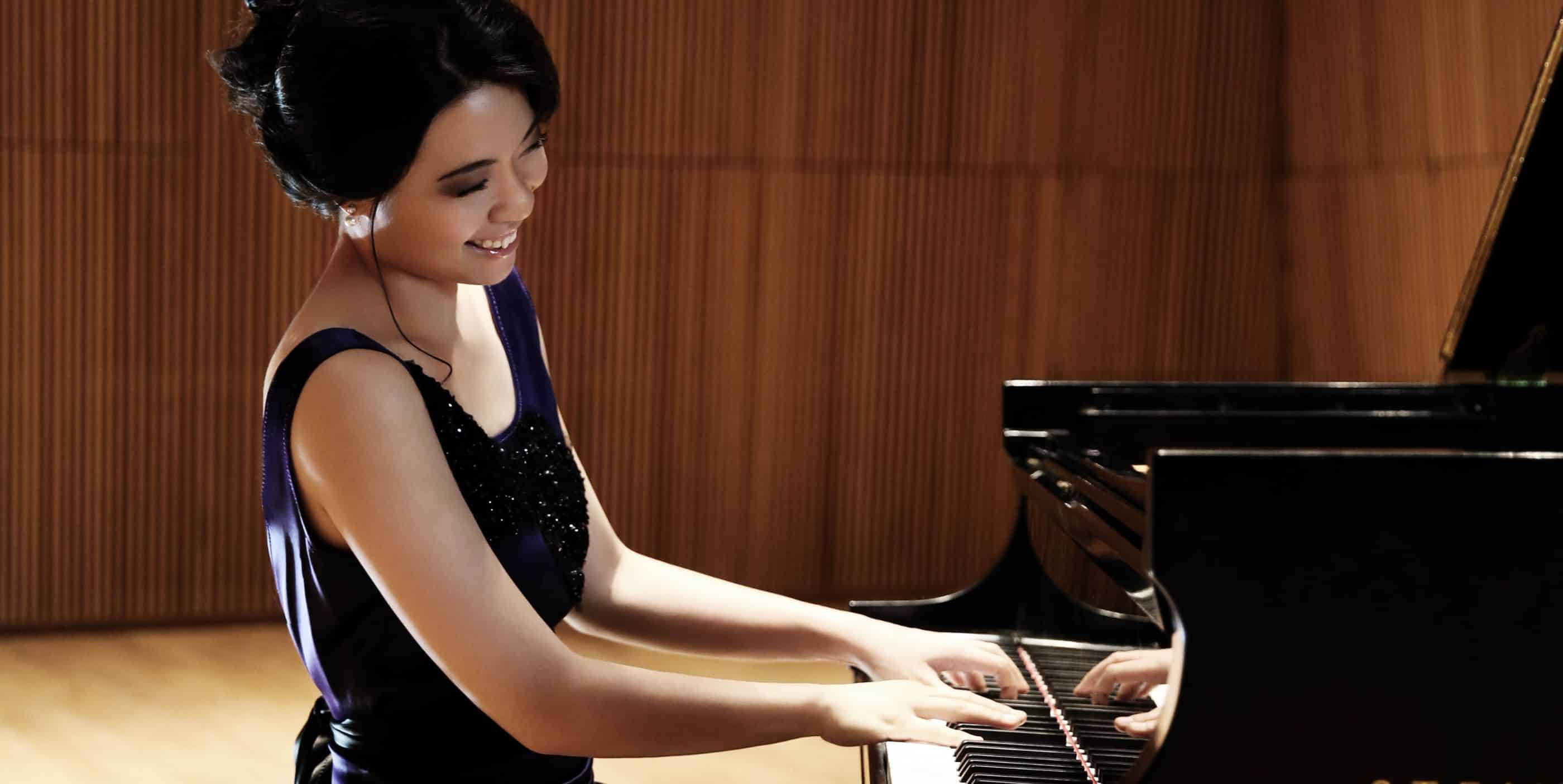

PLAYBILL
PROGRAM NOTES
by Jeff Counts
SAINT-SAËNS: Danse macabre
THE COMPOSER – CAMILLE SAINT-SAËNS (1835-1921) – Saint-Saëns left France briefly in March of 1871 to escape the violence of the Paris Commune but returned home just two months later to find the city full of nationalist zeal. While engaging deeply with the Parisian arts intelligentsia over the next couple of years, Saint-Saëns did something many who knew him considered unthinkable – he got married. It was not a happy union and both children born to Marie Truffot died young (one fell from a window, and the other contracted pneumonia). But as is so often the case in music history, great work comes from great pain. Saint-Saëns produced two of his most enduring scores during the courtship and short matrimony with Marie, the opera Samson et Delila and the orchestral tone poem Danse macabre.
THE HISTORY – Saint-Saens was quite taken with the symphonic poems of Franz Liszt and explored the form himself during the first half of the 1870s. The effort resulted in four works – Le Rouet d’Omphale; Phaéton; Danse macabre and La Jeunesse d’Hercule – and, for a time, they were all admired throughout Europe. Only Danse macabre survives today as a regular concert work, but “survives” is perhaps the wrong word, given its immense popularity. Saint-Saëns wrote it in 1874 after texts by the poet Henri Cazalis. The music began life as art song, but Saint-Saens quickly realized he needed a more robust palette to bring the words appropriately to life in sound. Those words included such imagery as “Death plays a dance-tune at midnight” and “Through the gloom skeletons pass” and “The bones of the dancers are heard to clatter…” In the orchestral versions, those evocative vocal lines were given to the solo violin and, among the many tricks Saint-Saëns would employ in the new guise, the rattling of the skeleton bones mentioned above was performed on the xylophone. The latter choice was a stroke of true genius, and the composer liked the idea well enough to repeat it later in his own Carnival of the Animals. Grisly depictions and suggestive sonic devilry abound in Danse macabre, from the use of the Dies irae chant to the predominance of the tritone interval (known from earlier days to represent Satan himself). But the overall character sounds playful now to our modern ears, maybe even a bit comic. Therein lies the true legacy of this music. Saint-Saens could not have known he was seeding future American youth concerts with an annual Halloween staple, but he must have seen early on that he had a career-making hit with Danse macabre. For better or worse, his Danse is everywhere today from film to ballet stages to Olympic figure skating routines.
THE WORLD – Elsewhere in 1874, Denmark granted Iceland a constitution and limited home rule, Far from the Madding Crowd was published by English novelist Thomas Hardy and cartoonist Thomas Nast first symbolized the American Republican Party with the image of an elephant.
THE CONNECTION – Danse macabre has been performed frequently by Utah Symphony, but it has not been programmed on the Masterworks Series since February 2018. Thierry Fischer was on the podium.
LISZT: Totentanz
THE COMPOSER – FRANZ LISZT (1811-1886) – In the early 1860s, the crushing disappointments of Liszt’s personal life forced him to seriously consider the solace and rigor of monastic life. He had lost a son and a daughter (both in their 20s) and had his proposed marriage to Princess Carolyne von Sayn-Wittgenstein thwarted by the Pope and the Tsar. It was all too much for a man of passion in his early 50s, so he sought dispensation (yes, from the very same Pope, who said yes in this case) to give himself fully over to his God. Though he never actually became a priest, he did officially enter the clergy’s lower orders on April 25, 1865, and was known as “Abbot” Liszt for the rest of his days.
THE HISTORY – Liszt’s death-obsessed showpiece for piano and orchestra Totentanz had premiered at The Hague just ten days prior to his partial taking up of the cloth. But the close timing of the premiere and the tonsure, while historically fascinating, was incidental. Liszt had begun work on Totentanz as far back as 1838 and did not consider it “completed” until 1849, a date that lost some of its significance after at least two revisions by the composer in the late 1850s. This long gestation period was not abnormal for Liszt and his two piano concerti endured similarly drawn-out processes. There are contrasting versions of the story concerning Liszt’s inspiration for Totentanz. Some, including at least one biographer, claim that Liszt was motivated by a 14th century fresco he saw while visiting the city of Pisa, a work known as The Triumph of Death. It has also been posited that he met his muse in a series of illustrations from the early 16th century by Hans Holbein with the more pertinent title of The Dance of Death (or Totentanz). Historically, the Totentanz (or Danse Macabre in French) was an allegorical art movement that focused on the ubiquity of death in the Middle Ages. The point of these pieces was simple – if famine or war didn’t get you, a plague probably would. We might not know the specific visual rumination on mortality that inspired Liszt, but we do know there were plenty of them around. Because if Mediaeval Europe was obsessed with everything related to death, then Romantic Era Europe was obsessed with everything related to Mediaeval Europe, so gruesome source material like Holbein’s work and the Pisa fresco would have been abundant and of timely interest during Liszt’s day. The thematic basis for the music of Liszt’s Totentanz is the plainchant “Dies irae,” upon which several intense variations are set. With that musical quote, Liszt claimed a place among good company with the choice. Berlioz had already used the theme in his Symphonie Fantastique and Rachmaninoff would employ it often years later.
THE WORLD – Elsewhere in 1865, the Civil War ended in America, but President Lincoln was assassinated just days later, the Matterhorn was summated for the first time and the Salvation Army was founded in England.
THE CONNECTION – Totentanz has not appeared on the Utah Symphony Masterworks Series since December 2011 when Kirill Gerstein was featured as soloist and Gilbert Varga conducted.
RACHMANINOFF: Symphony No. 2
THE COMPOSER – SERGEI RACHMANINOFF (1873-1943) – Russia was a place of considerable social and political unrest in the years immediately following 1905. Rachmaninoff found it difficult to work during his country’s nascent attempt at revolution and sought professional refuge first in Pisa, Italy and later in Dresden. But it wasn’t only civil strife he was running from. Rachmaninoff was under professional pressure as well, thanks in part to the conducting position he held with the Bolshoi Opera since 1904 and two new stage works he composed for the company. He needed a break from all of it, and in Dresden he found enough peace and quiet to complete his 2nd Symphony. Given his previous experience with the genre, this was no mean feat.
THE HISTORY– Rachmaninoff’s 1st Symphony failed miserably in 1897 and the disaster nearly convinced him to abandon large-scale symphonic composition forever. It was three years before he made another oblique attempt with the 2nd Piano Concerto and thankfully its reception was as resoundingly positive as the 1st Symphony’s was negative. Though apparently cured of his big orchestra allergy, Rachmaninoff remained reluctant regarding the composition of another symphony until 1906 while in beautiful, uncomplicated Dresden. The idyllic surroundings and room to think helped, for sure, but it was a fitful endeavor at first with an initial draft was not to his liking. He checked his frustration however and reworked the score into the perfect embodiment of expression and confidence that would win him the Glinka Prize in due course. Rachmaninoff conducted the 1908 premiere in St. Petersburg himself (no reportedly drunk Glazunov on the podium this time around!) and, in contrast to the experience from a decade before, the music was met with great enthusiasm from the audience. The work has had an interesting life during over its ensuing one hundred plus years of existence. It is an expansive utterance, befitting the man who made it, but in the eyes of many it is too long. Almost from the start, Rachmaninoff’s conductor colleagues suggested performance cuts to the piece (some quite extensive and totaling almost 20 minutes) and the composer surprisingly blessed the majority of them. That he would be anything other than incensed by such revisionism is hard to imagine, but he seemed to see absolutely no harm in it. According to one source, in fact, Rachmaninoff stated that he had “no objections” to cuts to his 2nd Symphony if others thought them necessary but it seems important, historically, that he always conducted it himself in its original, complete form.
THE WORLD – Elsewhere in 1908, a large group of women stormed the British Parliament demanding suffrage, the Model T Ford was introduced in America, the Geiger Counter was invented and The Wind in the Willows was published by Scotsman Kenneth Grahame.
THE CONNECTION – Symphony No. 2 was performed on the Utah Symphony Masterworks Series most recently in May 2018. Thierry Fischer was on the podium.
PREVIEW THE MUSIC
Preview music or sign in to your Spotify account to enjoy the entire composition.
Follow us!



